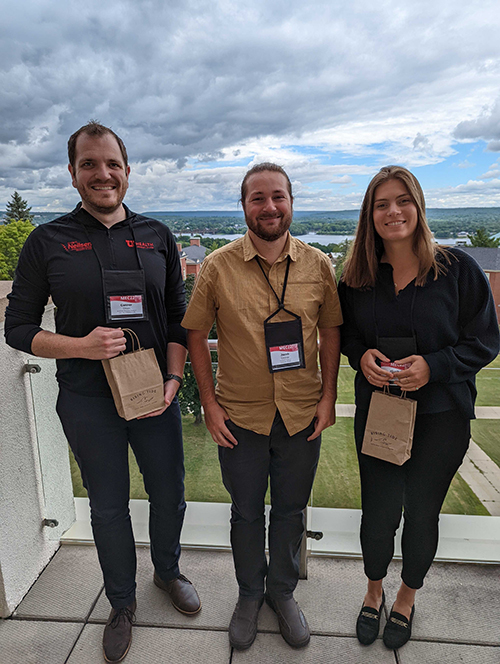
University of Utah electrical and computer engineering Ph.D. student Connor Olsen was recently awarded first place in a student podium competition held at the 2022 Myoelectric Controls Symposium (MEC) in New Brunswick, Canada. Olsen currently works under electrical and computer engineering assistant professor Jacob A. George in the Utah NeuroRobotics lab conducting research around assistive technology for more intuitive control of smart-home devices using hand gestures and brain/muscle signals.
MEC is hosted every three years by the University of New Brunswick in Fredericton, NB. This conference attracts experts from various industries around the world focusing on upper-limb robotic prostheses. This year, the conference was attended by about 300 people. Olsen was one of several graduate students competing in the podium competition where he gave a 12-minute presentation about his research paper, “An Inexpensive and Adaptable Prosthetic Wrist Improves Dexterity and Reduces Compensatory Movements.”
“Individuals who have suffered from an amputation are now able to control bionic hands using muscle signals, but not all these hands come with built-in wrists. When that wrist isn’t available, they must compensate with unnatural movements in their arm and shoulder,” said Olsen. “Simple activities, such as opening a door, require wrist motions that, when you don’t have a power-wrist prosthetic, force you to compensate in unnatural ways.”
In addition to the goal of reducing compensation, the research aimed to demonstrate a lower-cost power-wrist solution. “We wanted to show that we could make a low-cost wrist and use it on any hand and it would perform the same benefits of a regular high-end, more expensive wrist,” Olsen said
“This work wouldn’t have been possible without all the contributions from so many people,” he added. “I received help from many mentors and collaborators – it really is a joint effort. I think [this award] is a testament to our professor, our lab, and the progress that has been made in a short few years since the lab was founded.”
To read Olsen’s award-winning conference proceeding, click here.